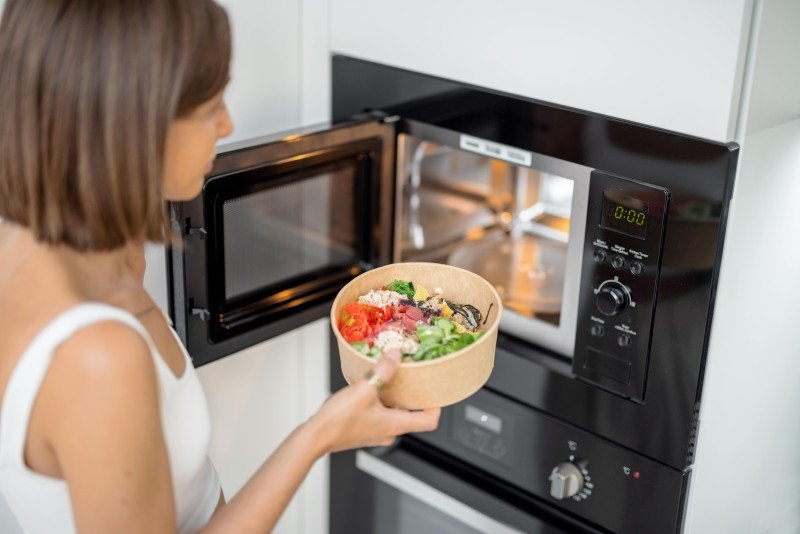Need Inspiration? Look Up Fan Oven Sale

Understanding Kitchen Ovens and Hobs: A Comprehensive Guide
The kitchen is frequently referred to as the heart of the home, and for great reason. It is where families come together, meals are prepared, and memories are developed. Central to this cooking haven are two necessary home appliances: the kitchen oven and the hob. Understanding their features, types, and performances is vital for efficient cooking and can substantially improve a home chef's experience. This article will explore the world of kitchen ovens and hobs, analyzing their different types, benefits, and tips for making informed choices.
Table of Contents
- Intro to Kitchen Ovens
- Kinds of Ovens
- Traditional Ovens
- Convection Ovens
- Microwave Ovens
- Steam Ovens
- Understanding Hobs
- Types of Hobs
- Gas Hobs
- Electric Hobs
- Induction Hobs
- Advantages of Using Ovens and Hobs
- Selecting the Right Oven and Hob for Your Kitchen
- Maintenance Tips for Ovens and Hobs
- Frequently asked questions
- Conclusion
1. Introduction to Kitchen Ovens
Ovens are important appliances in contemporary kitchens. They supply a regulated environment for baking, roasting, and broiling food. With Sales Ovens and functionalities, choosing the best oven can considerably affect cooking times, food texture, and taste.
2. Types of Ovens
Traditional Ovens
Traditional ovens are the most typical type found in homes. Cheapest Fan Oven use either electric or gas power to heat up the interior and usually include a single cooking area.
Benefits:
- Versatile for baking, roasting, and broiling.
- Typically affordable.
Convection Ovens
Stove resemble standard ovens but come geared up with a fan that circulates hot air throughout the cooking chamber. This results in even cooking and browning.
Benefits:
- Reduced cooking times due to improved airflow.
- Enhanced browning and crisping of foods.
Microwave Ovens
Microwave utilize electromagnetic radiation to heat food quickly, making them practical for defrosting and reheating leftovers.
Advantages:
- Very fast cooking times.
- Energy effective.
Steam Ovens
Steam ovens use steam to prepare, maintaining the moisture and nutrients in food. They are especially popular amongst health-conscious cooks.
Advantages:
- Healthier cooking option.
- Maintains vitamins and minerals in food.
3. Understanding Hobs
Hobs, likewise referred to as cooktops, are the flat surfaces on which pots and pans are put to cook food. They can be integrated into kitchen countertops and are offered in numerous styles, fuel types, and styles.
4. Types of Hobs
Gas Hobs
Gas hobs use gas burners as their heat source, using instantaneous heat and precise temperature level control.
Advantages:
- Excellent control over cooking heat.
- Normally cheaper to operate than electric ones.
Electric Hobs
Electric hobs heat using electric coils or glass surfaces. They might take longer to warm up than gas, but they supply a smooth cooking surface and are easier to clean.
Advantages:
- Even heat circulation.
- Safe, as there's no open flame.
Induction Hobs
Induction hobs utilize electro-magnetic energy to directly heat up pots and pans. They require suitable pots and pans and offer instant responsiveness.
Advantages:
- Highly energy-efficient.
- Faster cooking times and accurate temperature level control.
5. Benefits of Using Ovens and Hobs
Both ovens and hobs come with their own unique set of advantages that can enhance any cooking experience. Here are a couple of crucial benefits:
- Diverse Cooking Options: Both appliances enable a series of cooking approaches including boiling, frying, roasting, baking, and steaming.
- Time Efficiency: Modern ovens and hobs frequently feature fast cooking settings, which save time in the kitchen.
- Precision Cooking: With advanced functions, users can achieve much better lead to temperature level control and cooking times.
6. Choosing the Right Oven and Hob for Your Kitchen
When selecting the best oven and hob, different aspects should be considered:
- Size: Ensure that the appliance fits comfortably in your kitchen area.
- Cooking Style: Consider what types of food you frequently prepare.
- Fuel Type: Whether gas or electric, think about schedule and efficiency in your area.
- Spending plan: Determine your spending plan and discover home appliances that satisfy your needs within that range.
Checklist for Choosing Your Oven and Hob:
- Assess kitchen space.
- Recognize your cooking preferences.
- Determine power source schedule.
- Compare functions and requirements.
- Set a spending plan range.
7. Maintenance Tips for Ovens and Hobs
Routine maintenance is essential for keeping ovens and hobs in optimum condition. Here are some maintenance suggestions:
- Clean Regularly: Wipe down surface areas after each use and deep tidy occasionally.
- Inspect Seals: For ovens, examine door seals to ensure they are airtight.
- Analyze Burners: For gas hobs, keep burners totally free of food debris to maintain reliable heating.
- Change Filters: If your oven has a filter, change it as advised by the producer.
8. FAQs
1. What is the difference in between a traditional oven and a convection oven?Conventional ovens
prepare food through convected heat, while convection ovens distribute hot air, leading to faster and more even cooking. 2. Do induction hobs need unique cookware?Yes,
induction hobs require ferrous pots and pans that can being allured to work efficiently. 3. Are steam ovens worth the investment?For health-conscious individuals or those who often prepare vegetables and fragile foods, steam ovens can be worth the financial investment
due to their ability to maintain nutrients. 4. Can I integrate an oven and hob into one unit?Yes, many makers provide combined units referred to as variety cookers, which integrate both an oven
and hob into a single device. 9. Conclusion Kitchen ovens and hobs are essential components of any culinary area, each offering unique features and functionalities suited for different cooking styles.
By comprehending the
types of ovens and hobs readily available, their advantages, and how to maintain them, home chefs can cultivate a more efficient and satisfying cooking experience. Whether one is an experienced cook or a newbie, making informed decisions about these necessary kitchen appliances is important.

